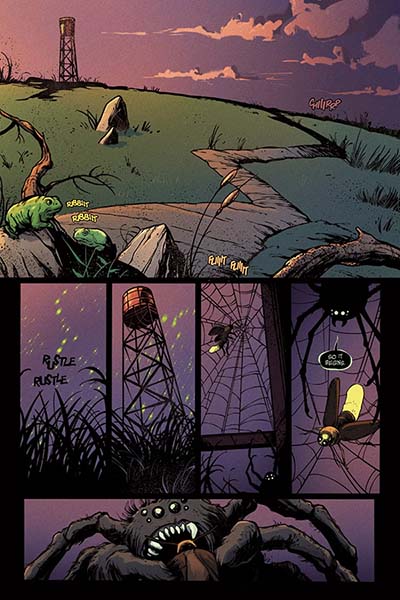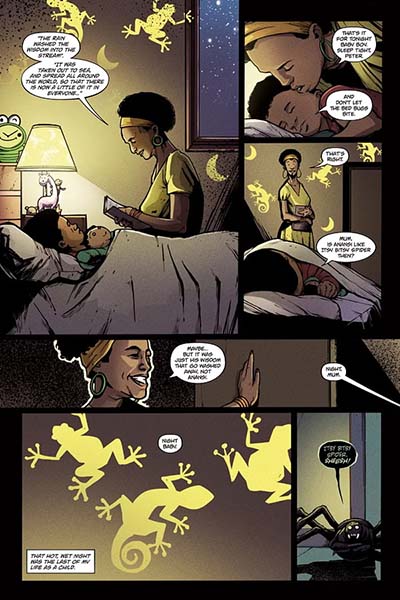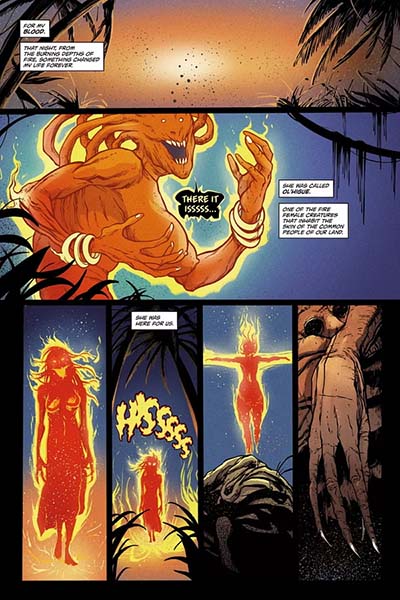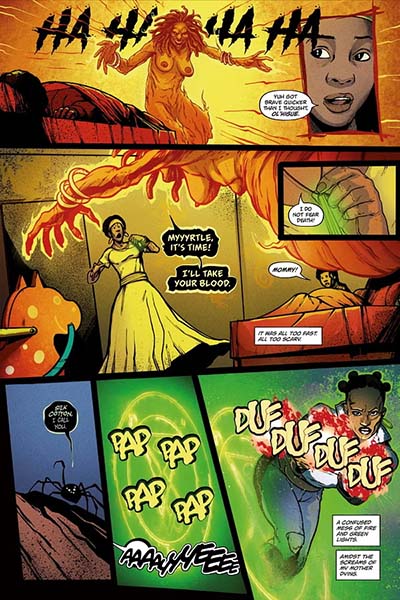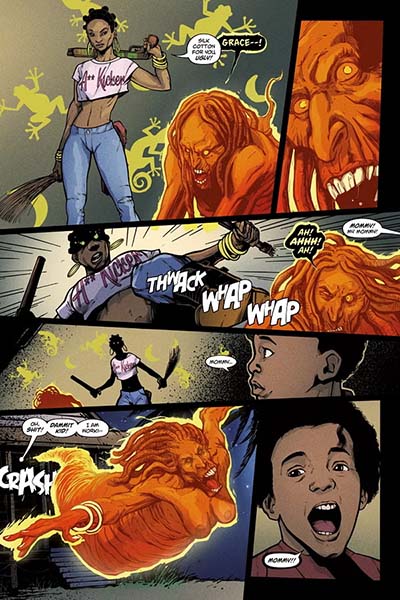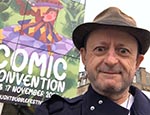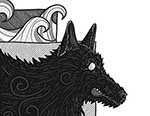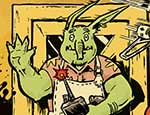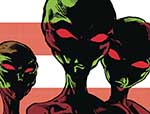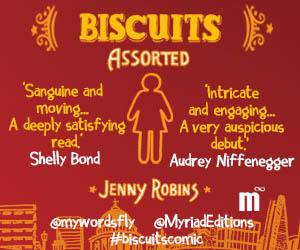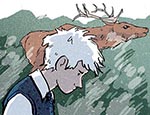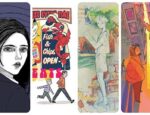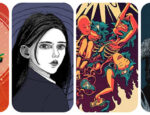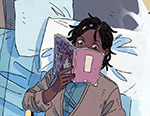THOUGHT BUBBLE MONTH 2024! Published earlier this year by Rosarium, Colleen Douglas’s graphic novel Silk Cotton (with collaborators Jesus C. Gan and Lorenzo Palomobo) has garnered a growing level of acclaim and interest. Its infusion of Caribbean folklore into horror narrative has put a new twist on the standards of the genre and was the catalyst for a dedicated spotlight evening on the book and its themes at London’s Cartoon Museum. In the next of our Thought Bouble 2024 interviews we caught up with Douglas to chat about the story, its influences and the importance of reclaiming oral narratives…

ANDY OLIVER: You have a rather lovely story about your entry point into comics that involves a fragmented Silver Surfer comic. So to begin with can I ask you about your introduction to the form and how you first broke into comics as a creator?
COLLEEN DOUGLAS: As a child growing up in Guyana, it is fair to say that on some level young grassroot comic book enthusiasts were rare, because their best reach to new books came from exchanges with other collectors. We were mainly a reading nation until 1980 when TV arrived. My finding of the Silver Surfer was one such event, since comics were not held to lofty ideals as they are now; then, in my world, they were employed in “practical” application, like wrapping for goods or food items. At the time of discovery the Surfer was serving as wrapping paper for ground provisions.
Needless to say I was stunned (as the designated un-wrapper of all shopping items) to find some silver dude on a surf board out in space. That led to the voracious need to consume more and from as many sources as possible regardless of the condition of the comic, single random pages were as valuable as whole issues (these were holy grail standards) and thus began my journey into comics.
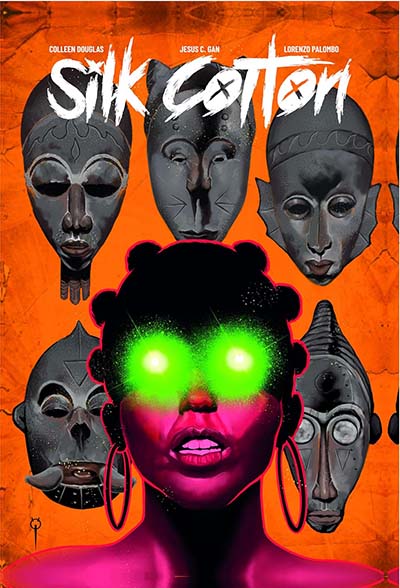
My first foray into comics as a creator came much later when I started to take the form seriously (up until then I was telling or creating short stories) after I realised I was a “visual” creator more than a decade ago. Due to my heritage, I was very attracted to the supernatural, making and dissecting “monsters” and world-building, and on the back of that I created my first “real” comic called Titan; a mashup of Lovecraftian elements and sci-fi, which I was fortunate to have published by Amigo Comics at the time.
AO: There’s certainly been a buzz around your latest project Silk Cotton which has included events at Gosh! Comics and the Cartoon Museum in London. So let’s pose the obvious question and ask you about the premise of the book and its cast of characters?
DOUGLAS: Silk Cotton is both a love letter to my childhood upbringing in the Caribbean and the cultural identity that comes with storytelling. It’s my (personal in some ways) contribution to the next generation of storytellers. The story of Silk Cotton is about family and all the messy intricacies of it. The young protagonist Peter is much like any kid in the Caribbean, he’s been told “the stories” of the supernaturals who live in the Silk Cotton tree and occupy the tenet of folklore. Except in his case it’s more than just a story, it’s a historical record because he IS a future generation supernatural who will be carrying the mantle forward.
He belongs to a family of Churail/Churlie, also called a Bahoot in Indian mythology (meaning a woman who dies in childbirth but is still connected to the living child, this supernatural came with the Indian indentured labourers to colonial British Guiana). It’s his task to safeguard the very stories he’s been told because in their telling they carry power for the supernaturals. To do that he must face off against an ancient whose aim is to destroy all the stories and thus the supernaturals and their home in the Silk Cotton tree.
The supernaturals in Silk Cotton are a myriad reflecting not just Guyana but the Caribbean diaspora, since they have crossed borders. E.g. Ol’Higue in Guyana is called a Soucouyant in Trinidad. Silk Cotton also includes a supernatural from Andros Island in the Bahamas – Chickcharney; which looks like an owl but is believed by the locals to be a fey with the appearance of an owl as it has arms as well as wings. Loogaroo is a supernatural with lycanthropic markers and hails from the Francophone islands.
AO: Obviously regional folklore and myth have been appropriated quite extensively in genre fiction and comics is no exception in that regard. To what degree is Silk Cotton also focussed on reclaiming those stories and that particular diaspora of supernatural entities and putting them into a more traditional context?
DOUGLAS: Silk Cotton is part of an ongoing zeitgeist in the debate of rebuilding and reclaiming the rich tapestry in my heritage for folklore and storytelling that was lost to colonisation. The thing to remember here is that these are not just stories they actually form identity to the people of Guyana and by extension the Caribbean. There they BELIEVE the supernaturals are REAL.
I once had to explain this to someone who compared Silk Cotton with fantasy created by Neil Gaiman because it included “Anansi”. That supernatural is not of Caribbean making but forms part of the heritage that came to the Caribbean with the transatlantic slave trade. Anansi himself hails from West Arfica where he is considered the patron “God of Stories”. Mainly Anansi stories in the Caribbean act as a conduit to inform the young in moral, ethical and social ways. Silk Cotton takes the supernaturals of those traditional folklore stories and reimagines them for a new generation, while preserving the core nature that those supernaturals represent. The supernaturals in Silk Cotton by and large have never been presented in comics to the public.
AO: Do you have any thoughts on how folklore and oral tradition can shape cultural perspectives through generations and still remain relevant in a contemporary world?
DOUGLAS: I think folklore and oral tradition by its design is an extension of identity, a good example of this is the Caribbean diaspora in the UK, even back to the ’40s, ’50s and ’60s. Caribbean nationals who immigrated to the UK brought with them those stories which were then passed on generationally and even to outsiders, which lends some insight into Caribbean lives to those unfamiliar with it. There isn’t a single person with some Caribbean heritage in the UK today that has not been exposed to some form of that folklore.
In some respects folklore in particular cultures act as the neurodivergent “family member”, while it is acknowledged as being there it can be overlooked because of its nature to reveal aspects in tradition that are discommoding. Yet to me it serves to enhance histories, gives meaning to identities for new generations, leads interesting talking points and stands with its contemporaries from other parts of the world like the more well-known Norse and Orisha pantheons.
AO: There’s an impressive amount of extras at the back of the book giving more details on the mythology on show in Silk Cotton. With that in mind can I ask you about the research process behind the graphic novel, how you approached that, and how extensive it was in terms of time?
DOUGLAS: Research is something I am fond of, so that part was easy. Finding the information was another matter, because the main elements of folklore traditions in Guyana are oral storytelling, much can be lost with each preceding generation. The other challenge was actually creating the images for the supernaturals from past references which were sparse because there were no real solid records pertaining to this. Much referencing came from limited recordings, story interpretations, previous art renderings and storytellers themselves. From there I took the crosspoint in all commonalities as a general framework and distilled it. This process took a little over a year if I dodged regular sleeping hours.
AO: Character design and appropriately moody colouring are obviously a vitally important part of the atmosphere and tone of Silk Cotton. What for you were the key ingredients that your collaborators Jesus C. Gan and Lorenzo Palombo brought to the story?
DOUGLAS: As an artist, Jesus to me understands monsters, not just the gory and immediate frightful kind, but the creeping, stifling and oppressive ones. He gets what it is to feel that something unseen is laired in a place and by extension Lorenzo understands the unspoken vibes that the art gives off and his colours tend to synchronise with this. It’s otherworldly and has a very foreign taste even for the supernatural because it’s not rational. It doesn’t start from anything logical you’ve met before, there are no comparable tropes, and you’re basically out there without a parachute. It’s exciting and exhilarating because you have free rein in an environment you’ve never been in before and I think they both thrive in this because they have the opportunity to push boundaries.
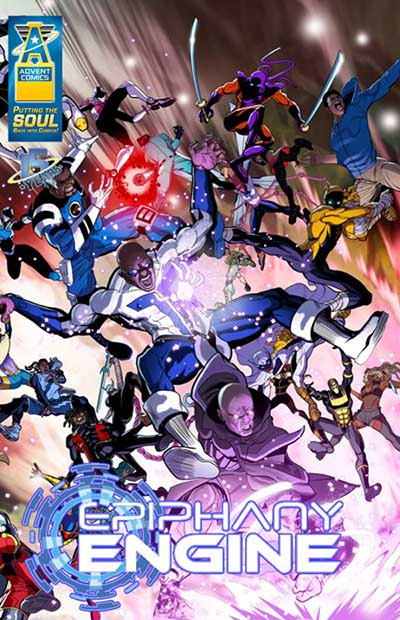
Cover by ChrisCross
AO: What other comics projects are you currently working on that we should be looking out for in the near future?
DOUGLAS: Well I just came off the Epiphany Engine (above) which was a collaborative event between 45 black US publishers, incorporating 70 black characters and some 35 black leading creators in the comics industry. I was fortunate to be among the writing team, sharing the platform with Brandon Thomas, Rodney Barnes and Greg Burnham among others.
I am also the Curation Editor for SHOOK! Vol. 2: Songs of the Dark Sirens which is the “sister” sequel to SHOOK!: A Black Horror Anthology, which was released by Second Sight and Dark Horse via Penguin Random House in Jan this year. Vol. 2 is expected to be out around March next year possibly. There’s one project I am VERY excited about but cannot speak about it at this time. I am currently writing a YA light novel for Fairsquare Graphics destroying a well-loved classic, which is fun and gives me a chance to flex my prose muscles.
AO: Is there a creator or a comics project you’re particularly looking forward to checking out at Thought Bubble this year?
Yes! To be fair I am looking forward to seeing what a number of creators like Sovereign Comics, Lucy Sullivan, Alison Sampson, Alex Moore, Shazleen Khan, Bex Ollerton and others have been up to. They are all amazing creators and I feel every time I turn away and look back, BAM! there’s something new again!
Colleen Douglas will be at Table D12 in the Travelling Man Hall at Thought Bubble.
Follow Colleen Douglas on Instagram here. You can find Colleen’s website here.
Thought Bubble 2024 runs from November 11th-17th with the convention weekend taking place on the 16th-17th. More details on the Thought Bubble site here.
Read all our Thought Bubble 2024 coverage so far in one place here.
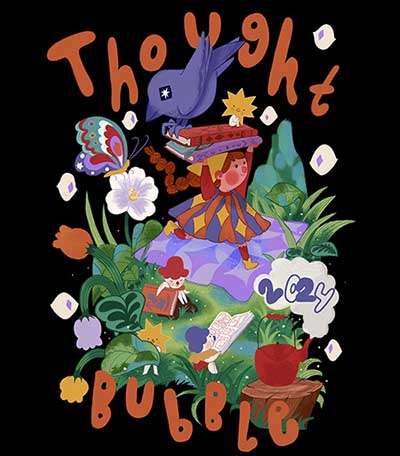
Art by Rocío Arreola Mendoza





